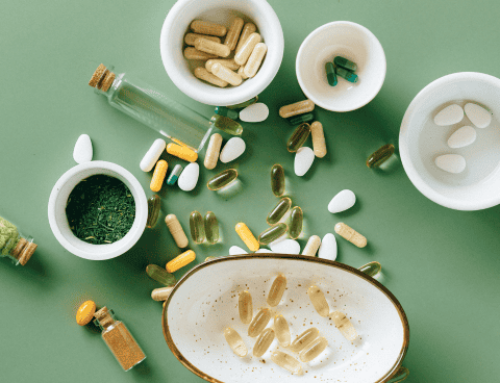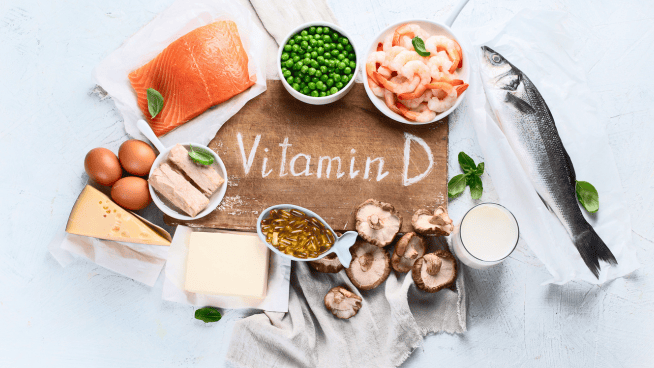Should You Be Taking Wheatgrass Shots?
I remember my first wheatgrass shot.
It was vibrantly green and smelled like fresh lawn clippings.
It tasted terrible.
I rationalized that the beverage must have extraordinary nutritional powers if people were willing to subject themselves to something so awful. Millions of Americans have likely drawn similar conclusions, as wheatgrass shots have enjoyed a health halo for decades.
Wheatgrass juice was popularized as a health food in America in the 1940s. Ann Wigmore, a holistic health practitioner, played a key role in its boom. Wigmore believed wheatgrass had the power to prevent almost any ailment, ranging from the common cold all the way to cancer. But there was little to no evidence to support Wigmore’s outlandish beliefs about the powers of wheatgrass, and she was even sued by the Massachusetts Attorney General for claiming wheatgrass juice could replace the need for insulin in people with diabetes. While Wigmore might’ve exaggerated the benefits of wheatgrass, it’s certainly no junk food.
Before we dive into the research on wheatgrass, let’s identify what it actually is. Wheatgrass is defined as “the young shoots of the wheat plant Triticum aestivum.” Also known as common wheat, Triticum aestivum is the most widely grown of all crops. Wheatgrass probably looks a lot different than how you picture wheat. But if you let wheatgrass grow long enough (several months), it will develop a head of grains (which is then harvested to make wheat products). Wheatgrass is the result of harvesting common wheat much sooner. The blade leaves themselves can be tough to digest, so it’s commonly crushed and squeezed to form a juice (it can also be purchased in freeze-dried form). From Memorial Sloan Kettering Cancer Center:
Wheat grass is prepared by sprouting wheat seeds in water for 7–10 days before harvesting the leaves. Because the leaves are fibrous and difficult to digest, the juice from the leaves is extracted and consumed raw. Proponents believe the enzymes responsible for detoxifying the body are deactivated by the cooking process. Wheat grass is also marketed as a nutritional supplement in powder form.
Charles Schnabel, an agricultural chemist who also played a key role in the popularization of wheatgrass, once claimed that 15 pounds of wheatgrass was equal in overall nutritional value to 350 pounds of ordinary garden vegetables. However, this has since been proven to be wildly untrue. The National Health Service states that “tests show that, pound for pound, the nutrient content of wheatgrass juice is roughly equivalent to that of common vegetables, such as spinach and broccoli.”
Some proponents of wheatgrass consumption believe it can cure diseases that have long confounded scientists, such as cancer and AIDs. It can also supposedly help prevent less serious issues, such as the common cold, graying hair and rheumatic pain. However, there’s been very little clinical research to support wheatgrass’s impact on such conditions. “There are few research studies about wheatgrass, so it’s difficult to assess such health claims,” the Mayo Clinic states. “Wheatgrass isn’t a miracle cure and shouldn’t replace regular medical care.”
However, wheatgrass juice isn’t without benefit.
A shot of wheatgrass juice is going to contain significant amounts of vitamin C, vitamin A, vitamin K, calcium, iron and potassium. These are all helpful compounds that support proper body functioning. However, other dark, leafy greens contain similar amounts of such compounds. But there is one area where wheatgrass juice really outshines its fellow veggies—chlorophyll. You probably remember chlorophyll from middle school science class. It’s the chemical found in plants that allows them to absorb light and turn it into energy via photosynthesis.
Wheatgrass is made up of about 70 percent chlorophyll, and its high concentration of chlorophyll is believed by many to be the key to its supposed health superpowers. Chlorophyll is actually similar in structure to hemoglobin, a protein in red blood cells used to transport oxygen throughout the body. Some wheatgrass advocates believe this similarity in structure means regular wheatgrass juice consumption will lead to increased hemoglobin production. Low hemoglobin production is also known as anemia, a condition where the blood lacks enough healthy red blood cells. Left untreated, anemia can cause severe fatigue, heart problems, pregnancy complications and even death. Chronic diseases like cancer, Chron’s disease and HIV/AIDs can interfere with the production of red blood cells and lead to anemia. So there are plenty of reasons why someone would want to increase their hemoglobin production. However, there’s currently little to no evidence that wheatgrass juice can enhance hemoglobin production. The NHS states that “there is no scientific proof to support this claim.” Memorial Sloan Kettering Cancer Center concurs that “these concepts are not supported by current scientific understanding.”
While more research needs to be done on wheatgrass and wheatgrass juice, a few studies have found some promising outcomes. A pilot study found that wheatgrass juice may aid in the treatment of ulcerative colitis, a condition that causes inflammation and ulcers in the colon and rectum. Another pilot study found that when breast cancer patients undergoing chemotherapy took wheatgrass juice daily, it decreased myelotoxicity. Myelotoxicity is a serious side effect of chemotherapy that causes a decrease in production of the cells responsible for normal blood clotting, immunity and oxygen transportation. A 2007 study found that wheatgrass supplementation decreased oxidative stress in healthy participants who engaged in routine physical exercise. Oxidative stress occurs when there’s an imbalance between production of health-damaging free radicals and health-protecting antioxidants, and it’s been linked with a huge number of harmful health conditions.
Will a daily shot of wheatgrass juice turn you into an invincible titan of health and wellness? No. But it does contain helpful nutrients and compounds that can have a positive impact on your health and longevity. As long as you’re not taking a daily wheatgrass shot in lieu of eating plentiful fruits and veggies throughout the day, there appears to be little downside. The Mayo Clinic says wheatgrass is “generally considered safe”, though it may cause side effects like nausea and constipation. Those allergic to gluten, wheat or grass should check with their doctor before consuming wheatgrass juice. Wheatgrass juice really comes down to personal preference—if you find it too expensive and disgusting, take solace in the fact other dark, leafy greens offer similar health benefits. But if you’re an established fan of wheatgrass juice, there’s no harm in continuing to consume it.
Photo Credit: AWEvans/iStock, alexxx1981/iStock
READ MORE:
RECOMMENDED FOR YOU
Should You Be Taking Wheatgrass Shots?
I remember my first wheatgrass shot.
It was vibrantly green and smelled like fresh lawn clippings.
It tasted terrible.
I rationalized that the beverage must have extraordinary nutritional powers if people were willing to subject themselves to something so awful. Millions of Americans have likely drawn similar conclusions, as wheatgrass shots have enjoyed a health halo for decades.
Wheatgrass juice was popularized as a health food in America in the 1940s. Ann Wigmore, a holistic health practitioner, played a key role in its boom. Wigmore believed wheatgrass had the power to prevent almost any ailment, ranging from the common cold all the way to cancer. But there was little to no evidence to support Wigmore’s outlandish beliefs about the powers of wheatgrass, and she was even sued by the Massachusetts Attorney General for claiming wheatgrass juice could replace the need for insulin in people with diabetes. While Wigmore might’ve exaggerated the benefits of wheatgrass, it’s certainly no junk food.
Before we dive into the research on wheatgrass, let’s identify what it actually is. Wheatgrass is defined as “the young shoots of the wheat plant Triticum aestivum.” Also known as common wheat, Triticum aestivum is the most widely grown of all crops. Wheatgrass probably looks a lot different than how you picture wheat. But if you let wheatgrass grow long enough (several months), it will develop a head of grains (which is then harvested to make wheat products). Wheatgrass is the result of harvesting common wheat much sooner. The blade leaves themselves can be tough to digest, so it’s commonly crushed and squeezed to form a juice (it can also be purchased in freeze-dried form). From Memorial Sloan Kettering Cancer Center:
Wheat grass is prepared by sprouting wheat seeds in water for 7–10 days before harvesting the leaves. Because the leaves are fibrous and difficult to digest, the juice from the leaves is extracted and consumed raw. Proponents believe the enzymes responsible for detoxifying the body are deactivated by the cooking process. Wheat grass is also marketed as a nutritional supplement in powder form.
Charles Schnabel, an agricultural chemist who also played a key role in the popularization of wheatgrass, once claimed that 15 pounds of wheatgrass was equal in overall nutritional value to 350 pounds of ordinary garden vegetables. However, this has since been proven to be wildly untrue. The National Health Service states that “tests show that, pound for pound, the nutrient content of wheatgrass juice is roughly equivalent to that of common vegetables, such as spinach and broccoli.”
Some proponents of wheatgrass consumption believe it can cure diseases that have long confounded scientists, such as cancer and AIDs. It can also supposedly help prevent less serious issues, such as the common cold, graying hair and rheumatic pain. However, there’s been very little clinical research to support wheatgrass’s impact on such conditions. “There are few research studies about wheatgrass, so it’s difficult to assess such health claims,” the Mayo Clinic states. “Wheatgrass isn’t a miracle cure and shouldn’t replace regular medical care.”
However, wheatgrass juice isn’t without benefit.
A shot of wheatgrass juice is going to contain significant amounts of vitamin C, vitamin A, vitamin K, calcium, iron and potassium. These are all helpful compounds that support proper body functioning. However, other dark, leafy greens contain similar amounts of such compounds. But there is one area where wheatgrass juice really outshines its fellow veggies—chlorophyll. You probably remember chlorophyll from middle school science class. It’s the chemical found in plants that allows them to absorb light and turn it into energy via photosynthesis.
Wheatgrass is made up of about 70 percent chlorophyll, and its high concentration of chlorophyll is believed by many to be the key to its supposed health superpowers. Chlorophyll is actually similar in structure to hemoglobin, a protein in red blood cells used to transport oxygen throughout the body. Some wheatgrass advocates believe this similarity in structure means regular wheatgrass juice consumption will lead to increased hemoglobin production. Low hemoglobin production is also known as anemia, a condition where the blood lacks enough healthy red blood cells. Left untreated, anemia can cause severe fatigue, heart problems, pregnancy complications and even death. Chronic diseases like cancer, Chron’s disease and HIV/AIDs can interfere with the production of red blood cells and lead to anemia. So there are plenty of reasons why someone would want to increase their hemoglobin production. However, there’s currently little to no evidence that wheatgrass juice can enhance hemoglobin production. The NHS states that “there is no scientific proof to support this claim.” Memorial Sloan Kettering Cancer Center concurs that “these concepts are not supported by current scientific understanding.”
While more research needs to be done on wheatgrass and wheatgrass juice, a few studies have found some promising outcomes. A pilot study found that wheatgrass juice may aid in the treatment of ulcerative colitis, a condition that causes inflammation and ulcers in the colon and rectum. Another pilot study found that when breast cancer patients undergoing chemotherapy took wheatgrass juice daily, it decreased myelotoxicity. Myelotoxicity is a serious side effect of chemotherapy that causes a decrease in production of the cells responsible for normal blood clotting, immunity and oxygen transportation. A 2007 study found that wheatgrass supplementation decreased oxidative stress in healthy participants who engaged in routine physical exercise. Oxidative stress occurs when there’s an imbalance between production of health-damaging free radicals and health-protecting antioxidants, and it’s been linked with a huge number of harmful health conditions.
Will a daily shot of wheatgrass juice turn you into an invincible titan of health and wellness? No. But it does contain helpful nutrients and compounds that can have a positive impact on your health and longevity. As long as you’re not taking a daily wheatgrass shot in lieu of eating plentiful fruits and veggies throughout the day, there appears to be little downside. The Mayo Clinic says wheatgrass is “generally considered safe”, though it may cause side effects like nausea and constipation. Those allergic to gluten, wheat or grass should check with their doctor before consuming wheatgrass juice. Wheatgrass juice really comes down to personal preference—if you find it too expensive and disgusting, take solace in the fact other dark, leafy greens offer similar health benefits. But if you’re an established fan of wheatgrass juice, there’s no harm in continuing to consume it.
Photo Credit: AWEvans/iStock, alexxx1981/iStock
READ MORE:













